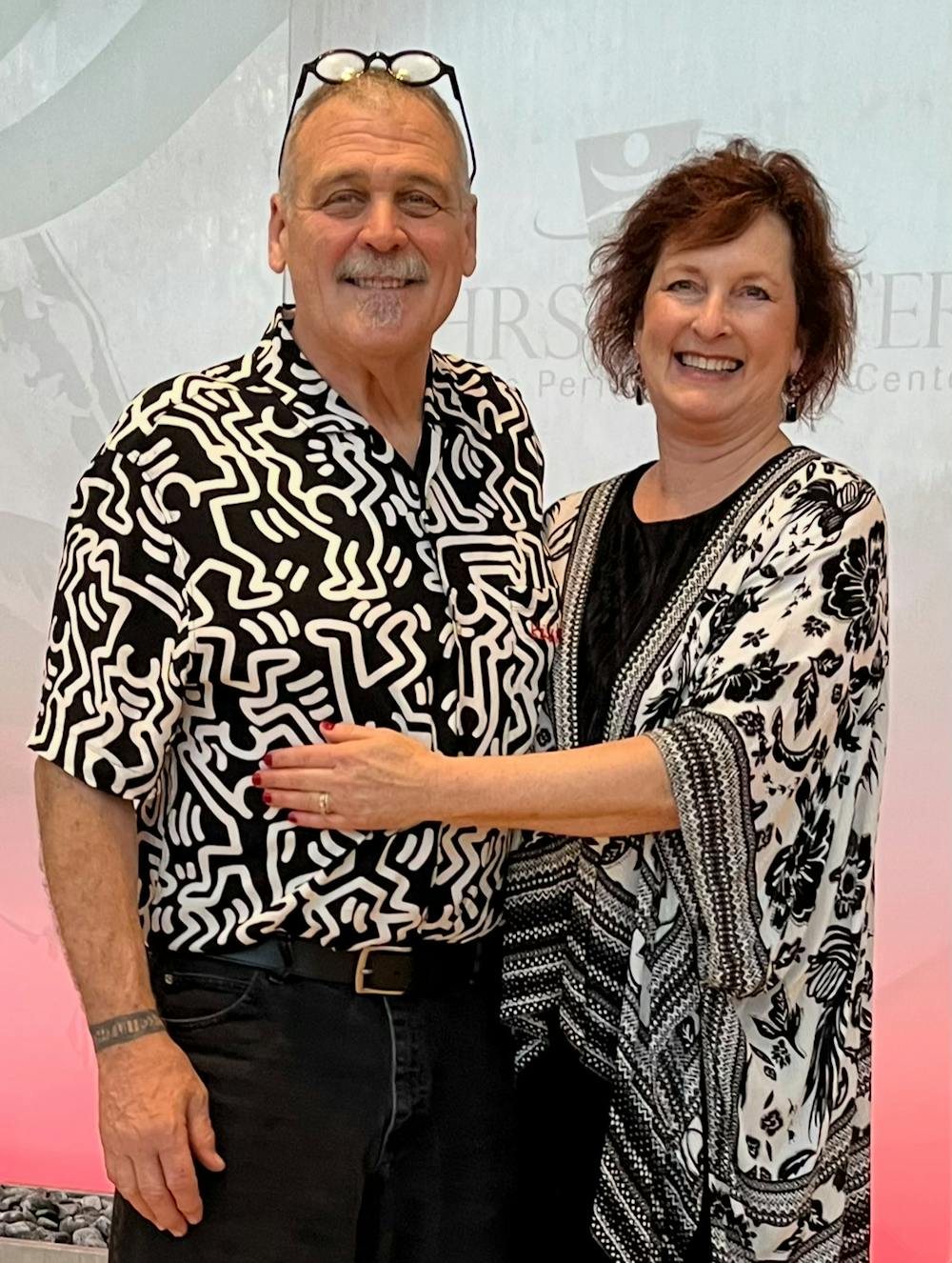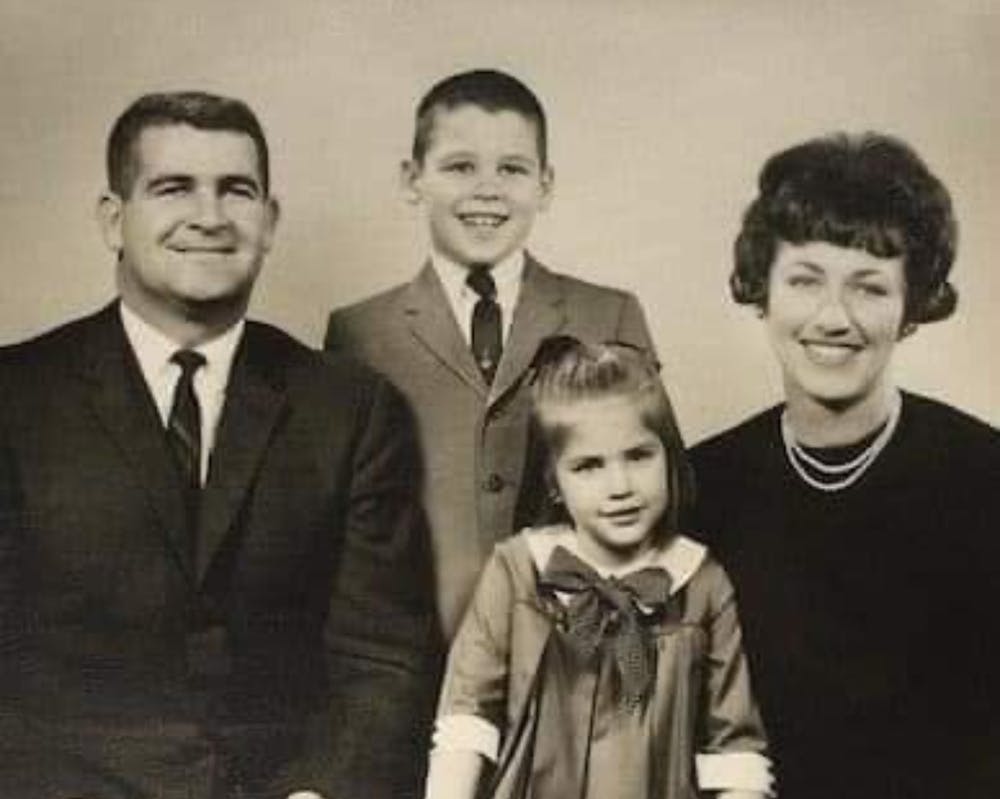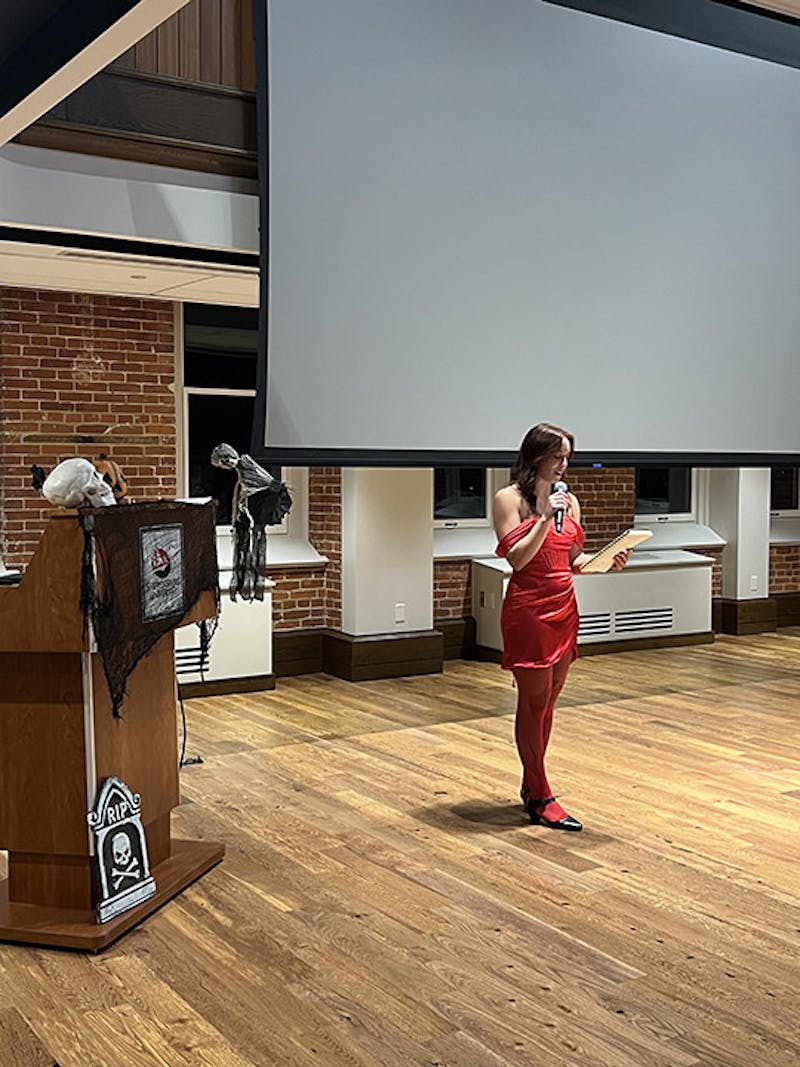Long before he was a professor, Steve Dolbin was a “dynamic little All-American lad,” according to the newspaper, a boy who spent his childhood running around the halls of Shippensburg State College. After a lifetime intertwined with Shippensburg University and 25 years of teaching at SU, Dolbin is stepping away from the classroom.
As Dolbin prepares to retire from SU’s art and design department, he tends to reflect on not long, storied career and his deep roots to Shippensburg.
Dolbin grew up on campus, quite literally. His father, David A. Dolbin, served as the the Dean of Men starting in 1963. He became Dean of Students in 1975, where he served until his retirement in 1992. His mother, Margaret, worked as a nurse in Old Main.
‘Little Stevie,’ as the clipping called him, grew up running around campus. “I could go over to the bio department and play with their snakes, and I could go over to geology and look at fossils,” Dolbin said.
His journey to becoming a professor at SU was not straightforward, though. While he studied art at Shippensburg, his father encouraged him to take some education courses at Kutztown over the summer. It was there he met Robin, who he later married and who serves as director of the H. Ric Luhrs Performing Arts Center on campus. His two sons also attended SU.
At the time, Dolbin didn’t want to be a teacher, but rather a “famous artist.”
“Maybe you could be a high school teacher and a football coach,” Dolbin recalled his father saying. “He just wanted security, you know?” Dolbin said.
After graduating, Dolbin taught some art courses at Cedar Cliff High School in Camp Hill. That would not last though, as he aspired to go to New York to be an artist. There, he studied at the Pratt Institute, while his wife pursued a successful career in fashion design.
After the couple’s time in New York, they moved to Connecticut. There, they restored an old train station and turned it into a home and studio. Dolbin taught at the University of Massachusetts and Amherst College, but when a position opened at Shippensburg, he seized the opportunity to return to his roots.
“I thought I could make some contributions to not only the university but the community,” Dolbin said.

Dolbin is retiring after 25 years at SU.
Dolbin has made his impact. During his time as the art and design department’s chair, he was instrumental in the remodeling of Huber Art Center. The renovation upgraded the historic building which once served as the university’s library with contemporary design and modern facilities.
He also spearheaded the creation of the art education degree program, which helps students become art teachers. Dolbin boasted that the department has dozens of graduates within a couple hours’ drive that are teaching art across from elementary to high school.
Beyond academics, Dolbin’s artwork has become local landmarks. He collaborated with the Cumberland Valley Rail Trail to create the sculpture path that showcases his own art as well as his students’ work.
One piece that was recently added to the trail is titled “River Spirit.” Destined for a museum in York that is currently under construction, the massive stainless-steel sculpture is covered in petroglyphs found on sites along the Susquehanna River.
Dolbin’s work also extends on to campus. One of his sculptures, “Creative Tools,” is installed outside the Grace B. Luhrs Elementary School.
“I love the idea of work that is outside and accessible for everybody,” Dolbin said. “One of the greatest things is kids playing around the sculptures.”
One sculpture Dolbin is quite proud of is the large stone outside Seth Grove Stadium that athletes touch before games. Likening it to Penn State’s Nittany Lion, Dolbin said he created it in the 1990s before he became a professor at SU.
Dolbin cannot help but feel proud seeing people sitting on it, getting their photos taken for different sports teams, and seeing the football team touch it before running out onto the field. The fact that dozens of teams have done so for decades is special to him. “It’s a living thing; it’s not just an object,” Dolbin said.
Noting that sculpting does a number on the body, Dolbin is ready to retire. But he does not do so without reservations. For one, he will sorely miss the students. “Why do you guys have to be so talented?” he asked.
“It’s great really, but it’s time to move on,” Dolbin said. That does not mean Dolbin is off to a cabin in the woods, however, nor does it mean slowing down. He and Robin have a cottage near campus where they plan to continue their work.
In addition to commissioned artwork, Dolbin plans on building a new studio and pursuing exhibitions in New York and abroad.
Dolbin also remains committed to supporting the university and art and design department during its transition. Dolbin has been actively helping recruit artists as adjuncts to fill the gap left by the retirement of all four tenured art faculty.
As Dolbin prepares to move on from the classroom, his influence will certainly remain in the students he taught, the sculptures that embellish SU’s campus and the spirit of creativity he fostered.
“I always believed you could come home,” Dolbin said. “And I did.”




The Slate welcomes thoughtful discussion on all of our stories, but please keep comments civil and on-topic. Read our full guidelines here.